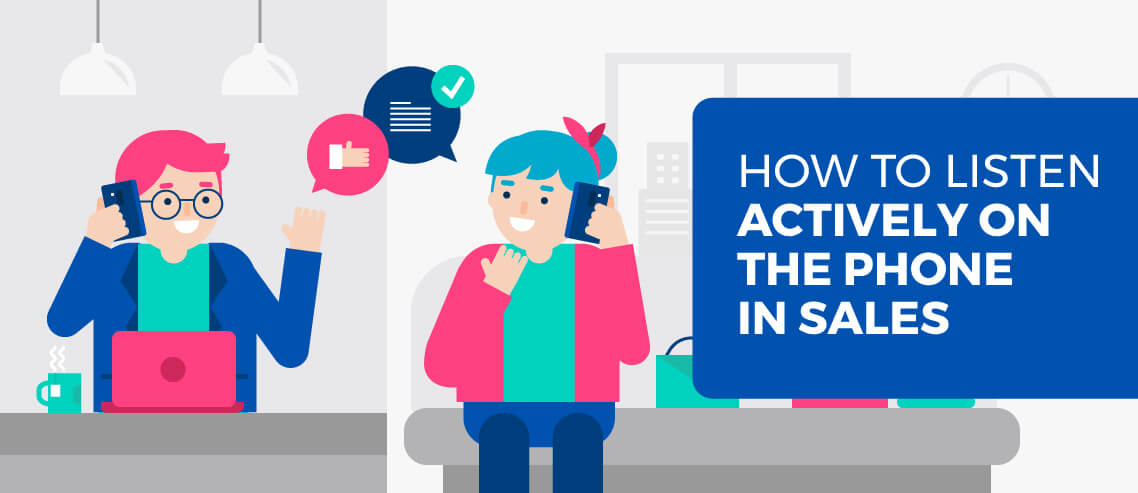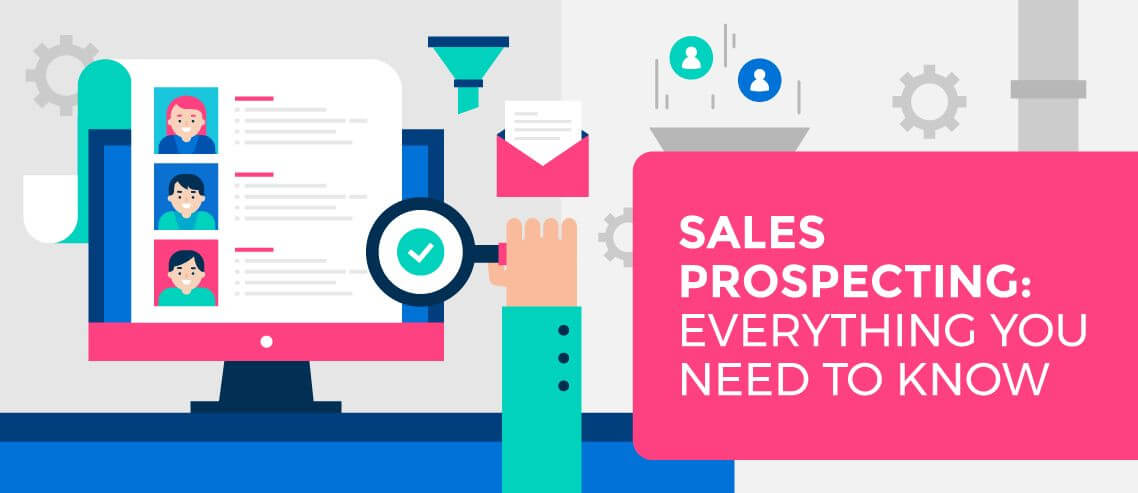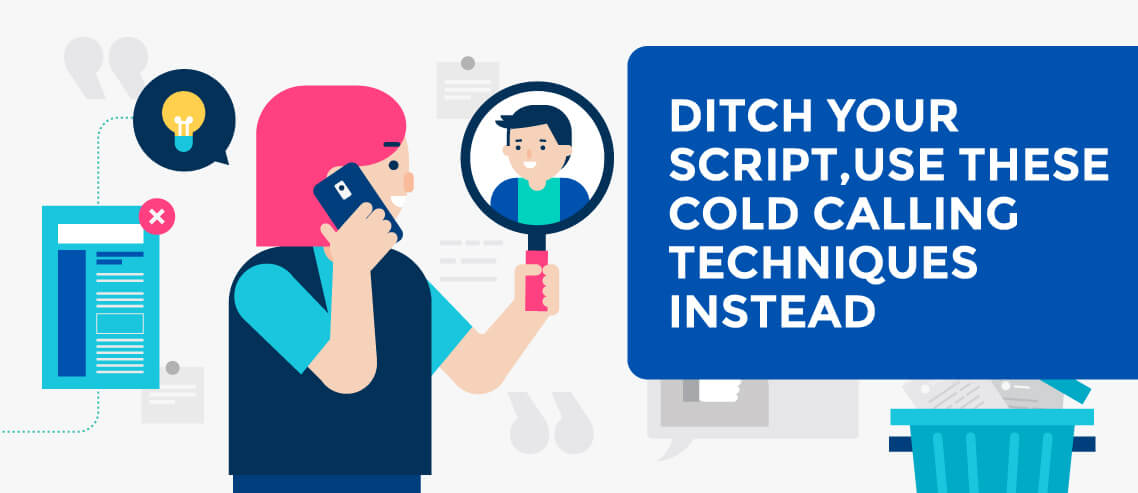How to Listen Actively on the Phone in Sales

Contents
Make the call.
Despite rumors to the contrary, the telephone is not dead. It’s not even dying. As far as tech toys are concerned, the phone may not be considered a digital disruptor – it was invented in 1876, after all – but you’re doing yourself, your leads, and your customers a disservice if you ignore it completely.
In fact, up to 92% of all customer interactions occur over the phone. You read that right. That is not a typo.
It is fair, however, to say that what we use the phone for has changed. It may not be the primary channel for acquisition and sales anymore – that title belongs to email and social media – but in terms of retention and maintaining the relationship after the sale, the humble phone call is punching above its weight-class.
Still not convinced? Consider:
- Over half of high-growth companies – a minimum of 40% growth for three years – explicitly state that cold calls are important
- Businesses that believe cold calls are dead generate 42% less growth than those that still use it
- B2B customers use an average of six different communication channels
- Over three-quarters of decision-makers have taken a meeting or attended an event that came from a cold call or email
- 41.2% of surveyed salespeople say the phone is their most effective tool
- 69% of buyers accepted a cold call from a salesperson in the past year
- 27% believe cold calls to new contacts are either very or extremely effective, while 75% of C-suite-level prospects want to be contacted by phone
The savvy sales and/or marketing person understands that communication and engagement in 2019 and beyond means embracing an omni-channel approach.
Email. Social media. Content marketing. SEO. Influencer marketing. Public relations. Digital ads.
And yes, telephone calls. Often forgotten, but still wildly powerful and effective.
Human beings are visual creatures. We’re hardwired for it, and much of what we communicate is done nonverbally. A study at UCLA determined that up to 93% of the indicators that a conversation has gone well come from nonverbal cues.
We know it’s important to make eye contact while communicating, to give nods and smiles, to shake our heads in agreement, and so on.
But what happens when we can’t see the individual with whom we’re speaking?
Up to 60% of issues between individuals and within organizations are attributed to poor communication.
So here’s the crux of it:
- Phone calls are crucial to customer retention, follow ups, checking in, dealing with complaints, gathering feedback, and even prospecting and sales to a lesser degree
- We gather much more from nonverbal cues than we do from the spoken word as relates to our effectiveness and focus
- The lion’s share of issues between people arise because of poor communication
See the disconnect?
How do we show that we’re paying attention and invested in a conversation while on the phone?
We clearly demonstrate that we’re actively listening.
Active Listening
But what exactly is that?
We all want to be heard. How does it feel when you’re talking to somebody and they’re looking around the room, or glancing at their phone?
Rude at best. Infuriating at worst.
Enter active listening. It requires that we listen to understand, remember what’s been said, and respond appropriately to it. It demands that we make eye contact, smile, nod, shake our head, and generally mirror the speaker.
We’re listening to understand, we’ve given our complete focus, and the speaker can see that we have.
On the phone, we don’t have that luxury. But that doesn’t mean you can’t indicate active listening there, too.
Here’s how to do it:
Active Listening on the Phone
When the speaker isn’t standing there in front of you, it’s easy to get distracted or intentionally divide our attention.
Don’t.
Stay Focused
Every customer interaction deserves your full focus. Every conversation is a chance to uncover new opportunities to work with them and make their lives better. That translates into happy customers and positive world-of-mouth.
So close the door if you have one, or use headphones if not. Stop multitasking.
We all have the ability to simply ‘sense’ when someone isn’t paying attention to us, even over the phone. Someone calling about a problem and they get the feeling you’re not listening to them?
That’s a lost opportunity, and you know they’re going to share that experience with others. In fact, a bad experience reaches 2x as many ears (or eyes, as the case may be) than a good one.
So pay attention. Always.
Ask Questions
There is simply no better way to a) demonstrate that you’re actively listening, and b) get clarification on what you’re hearing than asking thoughtful, open-ended questions.
So ask them. Take notes while listening and circle back when you get the chance rather than interrupt. Dig deeper with probing questions that clarify and enrich your understanding.
Repeat
If nothing else, repeat word-for-word what you’re hearing from the other person.
But if you really want to impress them and understand thoroughly, repeat what you’re hearing in your own words. When we paraphrase, we are solidifying our own understanding of something, rather than just regurgitating a verbatim recap.
Besides demonstrating active listening and assisting our own comprehension, it also provides an opportunity for the speaker to correct any misunderstandings or confusion.
Lead with phrases like ’What I’m hearing is …’ or ‘Sounds like you’re saying …’ or ‘Is it fair to say that …’ when sharing what you’ve heard.

We all want to be heard and understood.
Let It Play Out
When a customer or prospect is talking, you most definitely don’t want to give the impression that you have better things to do – even if it’s true.
If you try and speed things along, they’ll know it. Sometimes – most times – the best thing you can do is let them get off their chest whatever it is they need to get off their chest. Seems obvious, but it’s easy to forget.
Listen. Just listen. Take notes. Wait until they’re finished before paraphrasing what you’ve heard from them.
And it goes without saying – but I’m going to say it anyway – that you should never, ever interrupt them when they’re talking.
Don’t Jump to Conclusions
We’re all guilty of this, but don’t do it.
You might be almost positive you know what something means or where they’re going with a particular talking point, but don’t jump in and interrupt.
You might be wrong.
But even if you’re right, it comes across as trying to speed up the conversation instead of giving it the time it deserves.
Offer Verbal Cues
When we’re invested in a discussion, when we’re really listening to the other person, we are rarely completely silent.
We provide tiny verbal cues such as ‘Mm-hm’, ‘Okay’, ‘Right’, ‘Oh, I see’ and so on that nonverbally say ‘I’m listening to you.’
As speakers, we want to hear that. As listeners, we want to give that. It’s almost involuntary when you’re actively listening to someone, so if you’re not doing it, ask yourself why not.
Chances are, you’re not really listening.
Mirror the Speaker
When listening to someone, if they’re expressing positive emotions and feelings, mirror that. Match their tone. Verbally express how you’re feeling about the positivity they’re feeling.
If, on the other hand, they’re unhappy, angry, or expressing negative emotions, you want to recognize and empathize.
Explicitly tell them that you understand they’re angry, frustrated, upset, unhappy, or whatever other negative emotion they’re experiencing, that you acknowledge it and empathize, and finally what you’re going to do about it.
Pause Before Replying
Do you quickly spit a response out the moment there’s a lull in the conversation? Stop doing that.
Take a beat. Pause before replying.
This will eliminate accidental interruptions – are they actually done talking, or just taking a breath and collecting their thoughts? – and demonstrate that you’re considering your response. You’ll also hear the other person better if you’re not simply waiting for your ‘turn’ to speak.
Summarize at the End
Once it’s all said and done, provide a complete summary of everything discussed, including the agreed-upon next steps. Use your own words. Refer to your notes.
This is as much for you as it is for them. Did you understand everything? Are you forgetting anything?
Follow Up Via Email
Finally, get into the habit of sending a brief follow-up email shortly after the phone conversation.
It can be little more than a quick written summary of the discussion and what’s going to happen next. You might also confirm your next call or meeting with that individual.
Most of us don’t listen to understand. We listen to reply. If you want to excel at active listening on the phone, you have to reverse that trend.
So make the call. Leave a voicemail. Make a follow-up call. And listen to understand.





